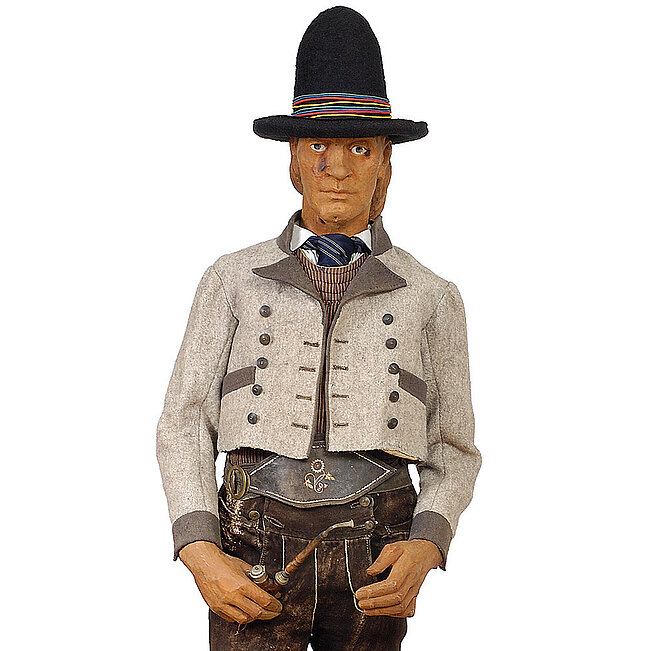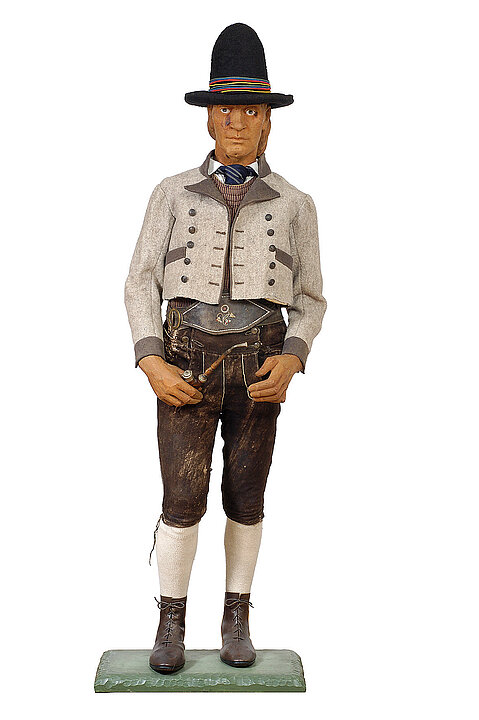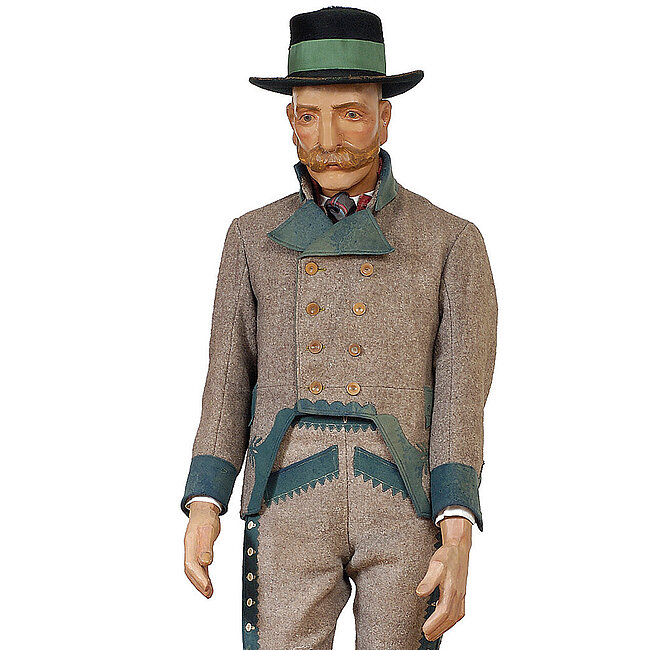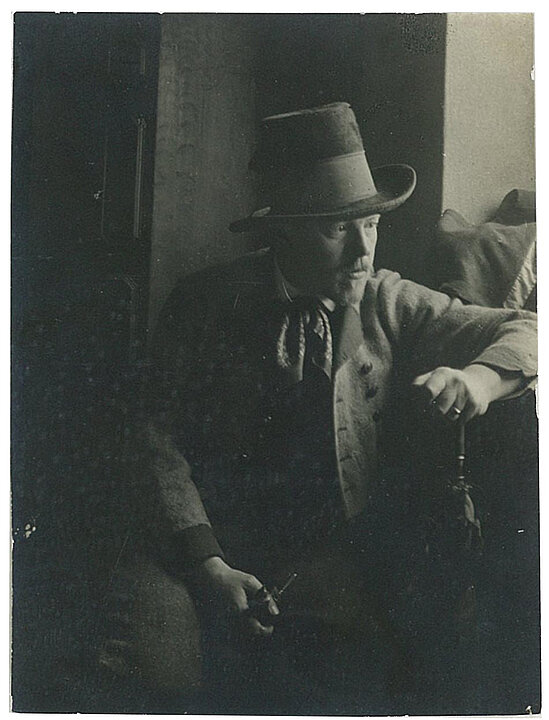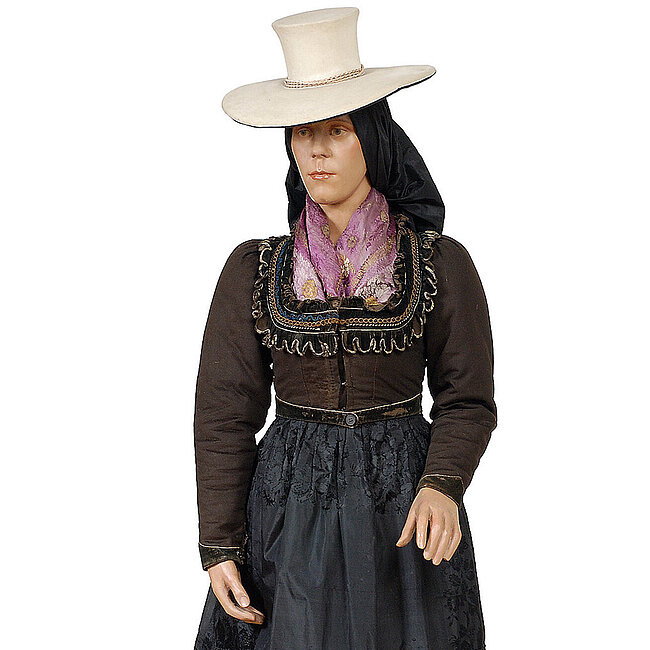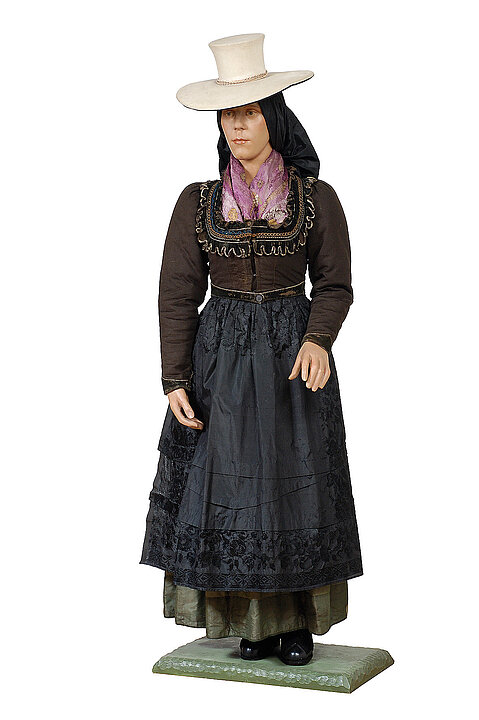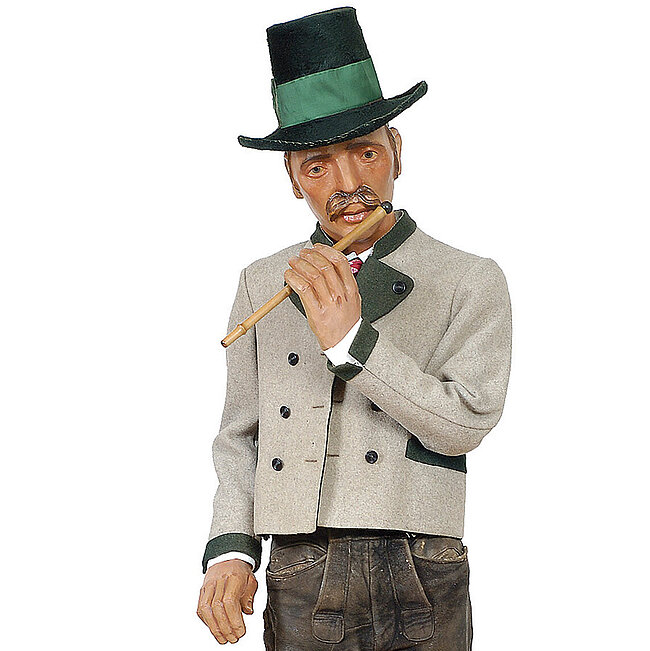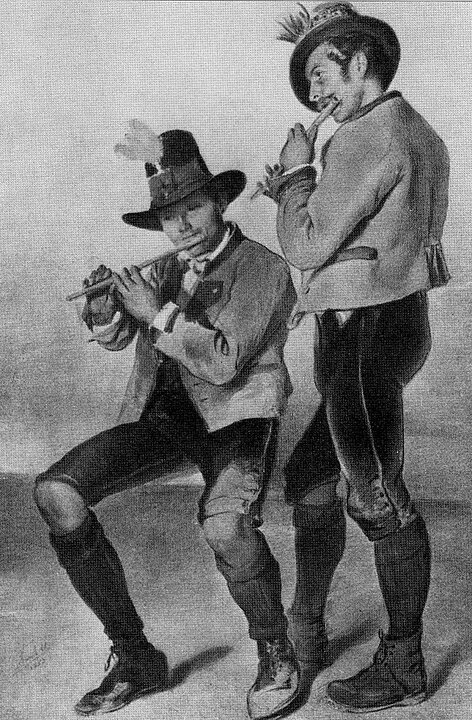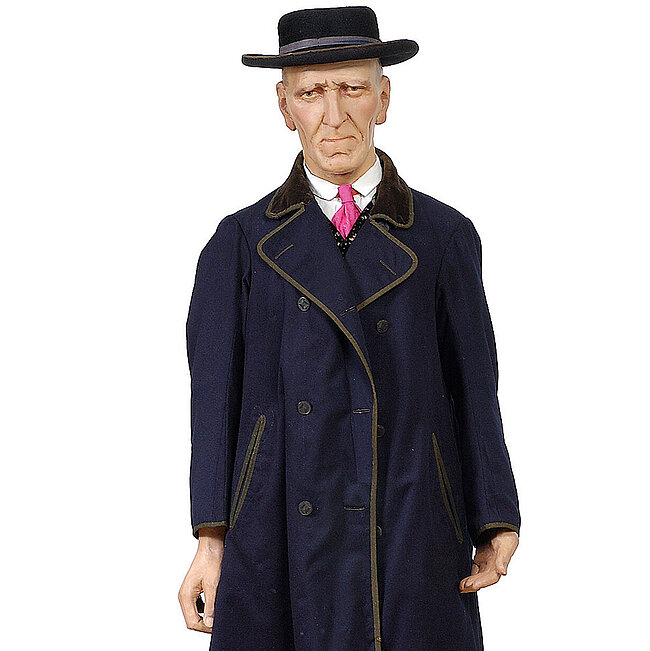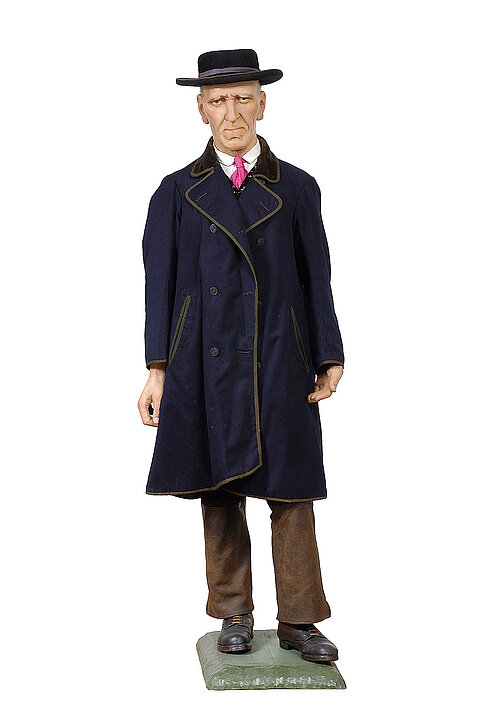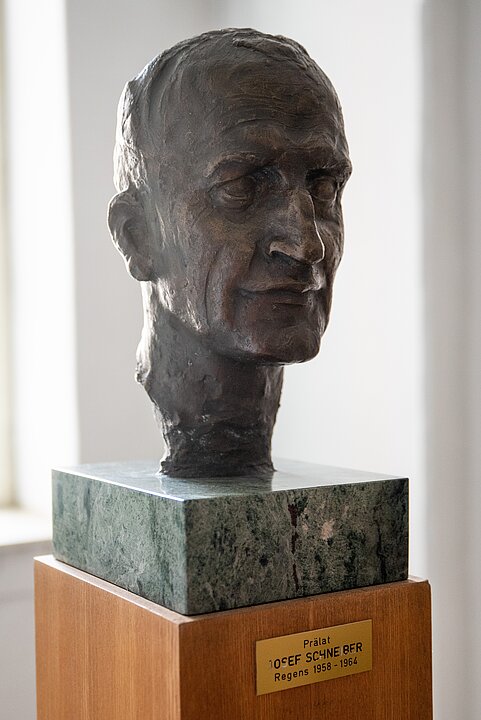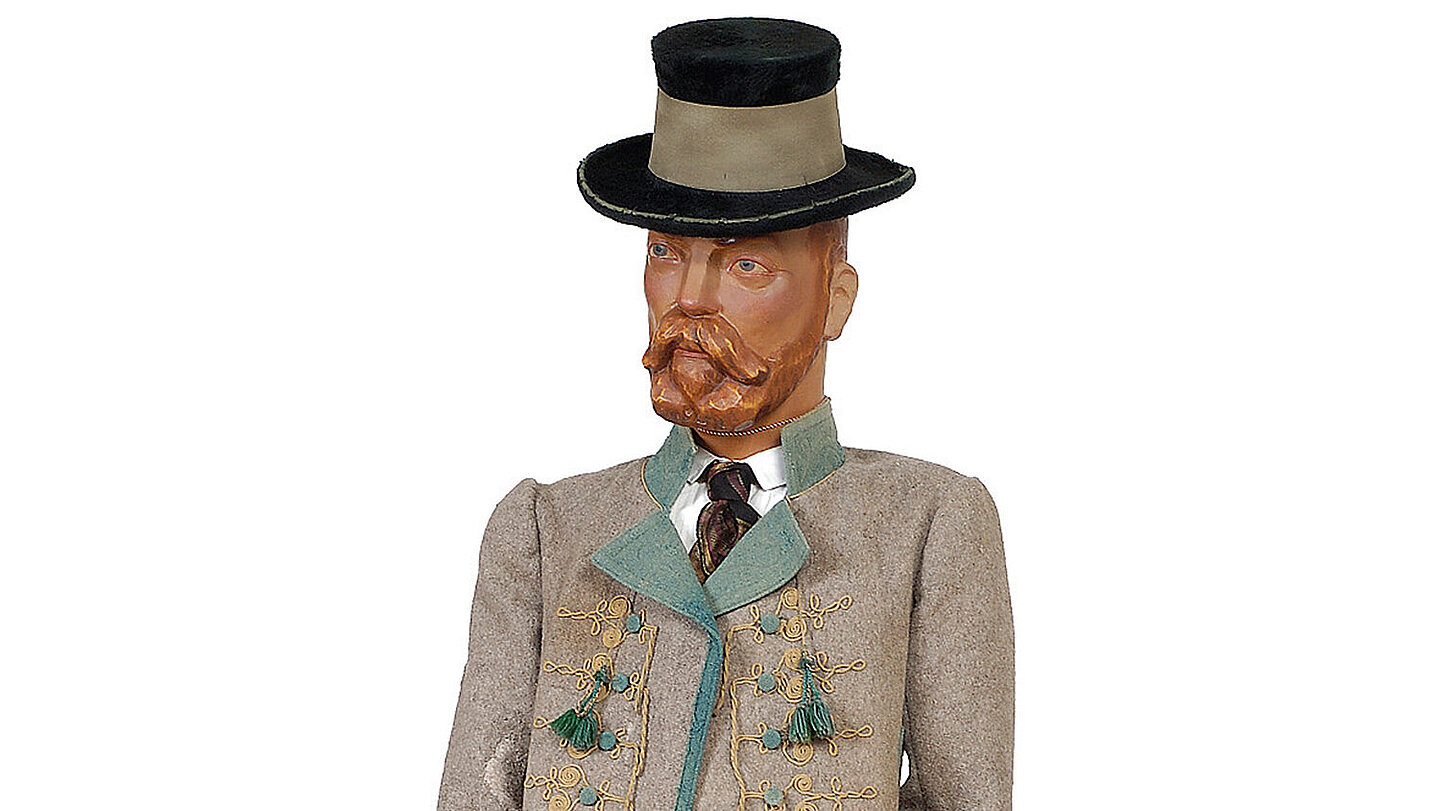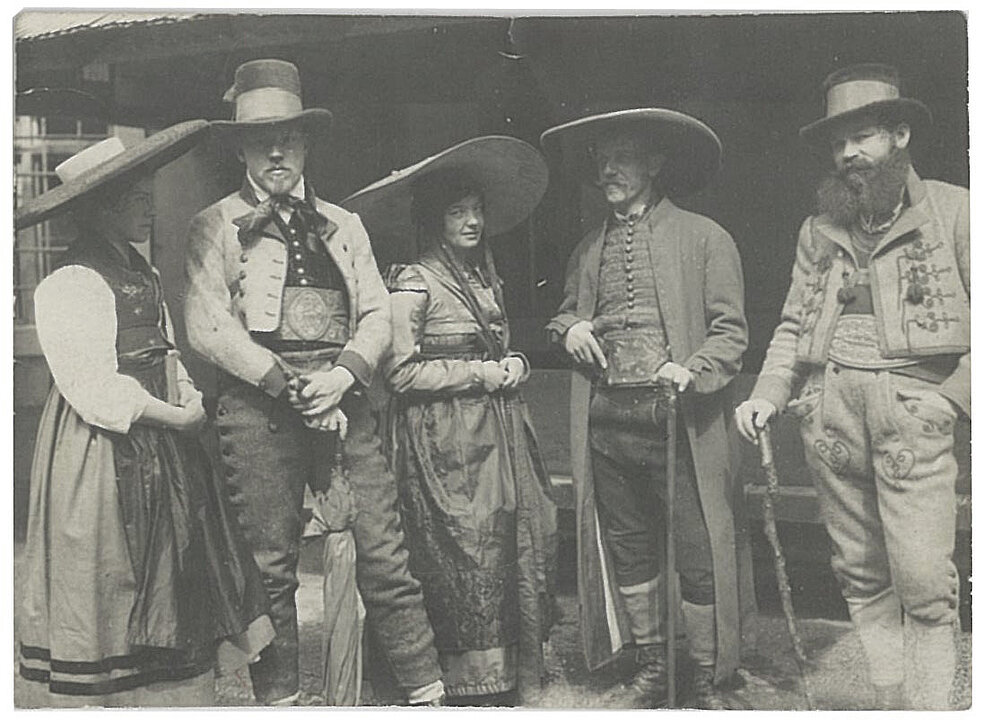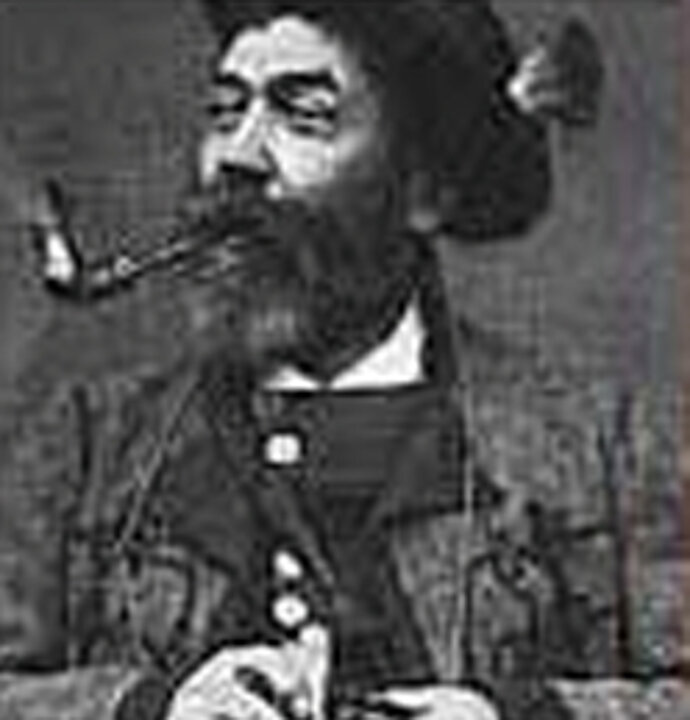Josef Schneiber in persona
The Old Man from the Upper Mur Valley likely immortalises another person from the milieu of the Folk Life Museum in the Trachtensaal—probably Josef Schneiber, born in 1908 in St. Gallen in Styria. Schneiber was ordained a priest in 1932 and was a member of the Bund Neuland, a Catholic association, where he also met Alexander Silveri. In the 1930s he carried out religious duties at St. Anthony's Church, was a frequent guest of Viktor Geramb and his family, and accompanied him to official appointments, for example to meet with the provincial governor.
In 1938, before the Anschluss (‘annexation’) of Austria to the German Reich, Schneiber participated in the ‘Working Group for Religious Peace’ in Graz. This group of National Socialist-minded priests called for a rapprochement with the Nazi regime and cooperation between State and Church. Banned by the Austrian Bishops' Conference, it then went ‘underground’. In 1940 Schneiber trained as a medical orderly. Letters from this time show that he could hardly wait for deployment to the front as a ‘baptism of fire’ and that he had not given up his belief in cooperation between the Church and the Nazi state. However, military deployment was not to be. Schneiber was appointed head of the newly created Seelsorgewerk and remained in office until 1949. Even before the establishment of the working group, he was considered an advocate and pioneer of ecumenical rapprochement between churches. In 1958 Josef Schneiber was appointed rector of the seminary in Graz and held this office until his death in 1964.
Schneiber had a personal relationship not only with Geramb but also with Silveri, one that went beyond their time together in the Bund Neuland. Silveri made a bust of Josef Schneiber—and also his gravestone.
The clothing
Geramb assembled the overcoat, shoes and shirt from the museum collection. The knee-length coat is made of dark blue loden with a turn-down collar of velvet. It was purchased in 1938 for 8 shillings and, according to the museum inventory, comes from ‘Upper Styria’. The black trousers are made of calfskin (Irchleder) from the knee down. These long trousers with ltubular eather attachments of different heights were also called Stößelhosen. They were purchased in November 1938 for 50 Reichsmark from a ‘Fräulein Capesius’, a senior teacher from Neumarkt. To date more detailed information about the origin of this item has not been found.




















